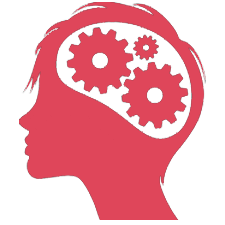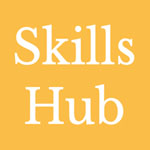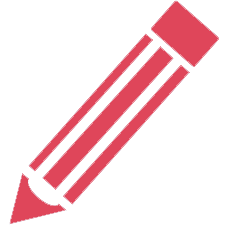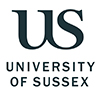So far you have analysed your title, found some useful sources and taken notes on the relevance those sources have to the development of an argument for your essay. In this Part of the Academic Writing Guide (AWG) you will look at your sources in more depth to help you critically evaluate how useful they will be in supporting your essay development.
Time to complete assessments = 3 hours
You can work through the pages in this Part at your own pace, taking a break whenever you need to. In this stage of the AWG you will be working towards the following aims and objectives:
1) To write an annotated bibliography to help you critically evaluate source material 2) To draw up a sentence outline for your essay 3) To reflect on your learning to support the continued development of your academic skills |
To learn about and practice how to: 1) Read and summarise/paraphrase the line of argument for each of the 5 texts that you have found. 2) Annotate your 5 sources, showing that you have critically evaluated each text for connections between the content and your essay question. 3) Use the MLA and/or Chicago footnotes referencing system accurately 4) Develop a thesis statement 5) Plan for the length and content of your essay 6) Present the counter-argument 7) Write introductions and conclusions 8) Reflect on what you have learned from this stage of the guide about academic writing |
After completing all of the sections in this Stage (both Part 1 and Part 2) you will be assessed on your ability to: 1) Produce a thesis statement for your essay question, detailing the argument you are going to make in your essay. 2) Produce an annotated bibliography for the 5 sources you will use in your essay (in addition to the core texts) that includes: • a summary of the main line of argument of each source • critical evaluation of the content • accurate bibliographic reference list entries for all sources. 3) Produce a sentence outline/plan for your essay that includes: • approximate word count plans for different sections • links to supporting source material • an introduction and conclusion • an argument(s) showing a different perspective(s) or counter-argument(s) 4) Write a short reflection on what you have learned about academic writing from completing this stage of the Guide and how you can continue developing relevant academic skills to suit your context. 5) Produce and upload a draft Turnitin Similarity Report |
N.B. In this Stage (Parts 1 and 2), as with Stage 1, you will be given activities and quizzes to help you learn and practice the outcomes. At 4 points you will be asked to complete an assessed task. Make sure you open a Word document and record your answers to these assessed tasks onto it and save it/them to your computer, as at the end of this stage you will transfer your answers to the template provided and upload it to a central assessment point (more information later in this Stage).
Now that you have found the 5 sources you need for your assessed essay (in addition to the core texts that you have been given by your AD tutor), you need to read them and take notes. Taking notes is an important part of an active study strategy. By developing your techniques you can make sure that the time you spend on taking notes is really worthwhile.
Taking notes can help you to:
• prepare for writing fuller, better-connected arguments in your essays
• be more focused and time-efficient in your exam revision period
• assess your own progress as you study.
There is no right or wrong way of taking notes. However, try to keep your notes brief and succinct. There is no benefit gained from trying to write everything down - your notes should reflect the main themes and the areas you have identified as important.
(From: Notetaking techniques - The Open University)


Watch this YouTube video that explains how to use Cornell Notes.
|
Make notes, make notes! I'm not really a person who is naturally inclined to make notes. In English there's loads of people that have different coloured felt-tip pens and make these beautiful pages of notes and I'm the opposite of that as I often just don't make notes. But it's good to just start making notes in a lecture because once you've got into the habit, say if you've missed the first 20 minutes and you haven't made any notes you feel less and less inclined unless something is really important or interesting to put it down.
But making notes engages you with what's going on, it's like an activity to do that keeps you awake, keeps your mind active and things are often useful that you don't think are useful at the time when you go back to write an essay. I realise this actually in the third year looking back on my first and second years because by second year I wasn't really making that many notes and often there'd be an infuriating moment when I was writing an essay thinking, ‘What was it that person said in that lecture?' and I just couldn't remember. In fact, one of my friends records all the lectures he goes to so that was a god send, so that's another good thing to do. |
Access the pdf transcript here.
For more ideas on note-taking go to the Skills Hub
So far in the pre-writing process you have analysed your title and searched for suitable sources to support your thesis/argument. In this next Part of the Academic Writing Guide (AWG) you will annotate each source that you have found by writing a concise summary or paraphrase of it, and an assessment of its value or relevance.
Each annotation will usually be about 50 – 100 words, although it may be longer. These annotations will allow you to develop an outline plan of how you will go about constructing your essay.

| annotate | bibliography | source | argument | thesis | compile | critical | relevant | identify | evaluate |
Open this link and read the definition of an annotated bibliography.
Use the four clickable links at the top of the page to read and find answers to the following:
What three things to you need to do when compiling an annotated bibliography?
What should each citation (entry in the annotated bibliography) include?
Approximately how many words should each citation consist of?
Do you write notes or full sentences?
What are tutors looking for in this type of submission?
Each entry in an annotated bibliography is known as a citation. The citation includes all the information that you put into your bibliography or reference list, using a referencing system such as MLA or Chicago footnotes.
Simply collecting sources for a bibliography is useful, but when you have to write an annotation you are obliged to read more carefully and evaluate it in order to assess how it fits into your research.
Read the annotations that the writer has produced for their chosen sources for the worked essay on genetics and race, and then complete the 3 question quiz below. You need to have the sample annotated bibliography open while you do the quiz.
Remember, quizzes in this Guide are designed to help you recall and process information.
The scores are not recorded and do not influence your grades for the Academic Development module.
These three statements have been extracted from the annotated bibliography. You are required to assess whether you think that each of these statements is: • A summary of content and argument • Critical analysis • A reflection on usefulness for the essay Statement 1: In the article Danahay, Martin. “Wells, Galton and Biopower: Breeding Human Animals.” Journal of Victorian Culture 17, 4 (2012) 468-479 the author compares and contrasts the attitudes held by Wells and Galton (founder of the Eugenics Society) regarding the applications of scientific advancements on human production. It cites essays and other writing by Wells which highlight his views and critiques of the eugenics movement (p469). The author does not argue that Wells was completely opposed to the eugenics movement or to violence towards animals, but rather suggests that he considered all humans to have the potential of becoming an animal. The statement above is:
Statement 2: The article also discusses the influence Darwin’s On the Origin of Species had on both Galton and Wells (p470), which helps to contextualise the key texts (Island of Dr. Moreau and E.E.S. pamphlet). The analysis of how London is depicted at the end of the novel is also relevant as it highlights the anxieties society held about the “boundary between the animal and the human” (p473). The statement above is:
Statement 3: The article was published in a peer-reviewed journal so can be considered reliable. The statement above is:
|
These seven statements have been extracted from the annotated bibliography. You are required to assess whether you think that each of these statements is: • A summary of content and argument • Critical analysis • A reflection on usefulness for the essay In the book Endersby, Jim. A guinea pig's history of biology. Cambridge, Mass.: Harvard University Press, 2007. chapter 3 ‘Homo sapiens: Francis Galton’s fairground attraction’ describes the context of and process with which Galton developed his ideas on eugenics and the possible improvement of humanity. The statement above is:
Statement 2: The chapter gives detailed descriptions of the historical context which relates to both key texts to be discussed in the essay. The statement above is:
Statement 3: For example, it describes the urbanisation of Britain and its adverse effects on public health: “By the middle of the nineteenth century, Britain was the most urbanized country the world had ever seen” (p65); with the rapid expansion of cities came challenges such as the failure of sewage systems leading to disease and unhygienic living conditions. The statement above is:
Statement 4: This helps to highlight some of the sources of anxiety that existed in British society at the time the two texts were published; in my essay, this could be used to analyse the proposals put forward in the E.E.S. pamphlet, which appeals to the public fear that there are too many sick people who are dependent on the state. The statement above is:
Statement 5: The chapter also describes how strongly Galton was influenced by the works of Charles Darwin (pp70-73) – he took inspiration from On the Origin of Species and developed his own theories on heredity and the improvement of the human race (p70) The statement above is:
Statement 6: This, again, could be referred to in the essay when discussing the socio-historical context The statement above is:
Statement 7: The book is from a credible source as it was written by a lecturer at the University of Sussex who specialises in the History of Science. It was published 10 years ago, but the topic I am looking at is unlikely to have changed in that time. The statement above is:
|
Statements have been extracted from the annotated bibliography. You are required to assess whether you think that each of these statements is: • A summary of content and argument • Critical analysis • A reflection on usefulness for the essay Statement 1: In the article Christensen, Timothy. “The "Bestial Mark" of Race in The Island of Dr. Moreau.” Criticism 46, 4 (2004) 575-595 the author explores the role of racial discourse in The Island of Dr. Moreau. It contains some relevant textual examples of how the language of race is incorporated into the novel. In particular, it argues that the repeated use of “negroid” refers to an evolutionary stage of human development, thus likening the animal people to the primitive, lesser people with lower “moral and intellectual priority” (p586). The statement above is:
Statement 2: Another useful section is the discussion over the use of the word “type” to refer to the animal folk. The article suggests that this is a reference to the influential works of Edwardy Tylor (anthropologist) and his use of “type” to refer to stages of human development from “primitive” to “civilized”. The statement above is:
Statement 3: The author also examines how Wells deals with the "relation of scientific and religious conceptualizations of humankind" (p 577), analysing the way in which "the Law" brings the animal society close to human society.
Statement 4: The article is published in a peer-reviewed journal. The year of publication was some time ago, but the analysis should still be relevant today.
|
|
Sue: So now tell me about the specifics of putting together that annotated bibliography once you'd found those sources. How did you find that?
Adam: Yeah. So what I would do is if I had a book say, for example, I would kind of go through each of the chapters, just have a brief look at the titles and make sure that I was going to a part within the book that was going to be relevant to what I wanted to discuss. Obviously, I couldn't read through the entire book so I had to be quite specific with that. And then it was just a case of kind of scanning quickly, reading through parts of the book to see if there were any particular dates, any particular sort of words or kind of things that kind of jumped out that seemed related to what I was looking into. And then I would kind of spend a little bit more time reading that section or going over that part. Sue: And did you rely mostly on books? Or did you have articles, online sources? What did you have in the bibliography? Adam: I had a couple of articles. Most of the sources were books. I don't know why it ended up like that. That was just the way that it ended up. I think it was just there was a lot more information it felt within the books. The articles were really good for covering off maybe reviews of a film or something like that. So looking at what people were saying maybe about the film, reviewing it, critiquing it or something like that. But in terms of historical context I found that going to books was a lot better. Sue: So in a sense you were doing two things in tandem, weren't you? You were finding the historical context material, and then you were finding that critique and that argument that would accompany it. So when you're dealing with a whole book how easy is it to know which part will help you? Adam: I mean with the title that we were given, you know we were specifically looking at Cold War, Britain, 1960s. It became very easy to sort of take out a book from the library about the Cold War, just quickly look through and find the bit that maybe was related to Britain or that period of time (the 1960s) or paranoia, so you could instantly kind of cut out a load of chapters and jump straight to the bits that you wanted. Sue: So really you're linking this work with that earlier work that you did where you analyzed your title aren't you? So everything's sort of linking forward isn't it? Good. So thinking about the annotated bibliography once you've moved on now to thinking more about writing up a draft, how helpful, or not helpful, will that be? Adam: Well I've just started writing my draft, and the annotated bibliography has been one of the most helpful things. I feel, as some parts of my essay are pretty much already written for me – you know I've found sort of different phrases or different sort of quotes that I'm going to take. I found specific experiences or incidents, and those are already adding to the word count of my essay. Sue: So that evidence feels quite solid? So that when you make a point in your essay you feel that you can immediately draw on relevant evidence? Adam: Exactly. And the structuring that was done in in the first stage of the OAWG, along with that annotated bibliography, has meant that I now know which bits can kind of go into which section. It makes it a lot easier to kind of piece that puzzle together. Sue: So far have you been able to keep drawing/have you been able to keep linking together the various tasks that you've been involved in up to this point? Has it made some kind of logic? Some kind of sense to you? Adam: Yeah. At times it maybe didn't seem like it was all connected, but as I've gone on, as long as I've worked through each step on the OAWG and looked carefully at the instructions and what's being asked it does all kind of build together and connect in the end. You don't always see the bigger picture at the beginning but once you get towards the end, and you have all the bits and start piecing it together then it makes a lot more sense. |
Watch the interview with Adam, one of our former Foundation Year students, who worked through the AWG and is reflecting on the way various stages of the AWG link together. As you listen, notice the strategies he used to scan books for relevant information and how the work he had done on analysing his title helped him select relevant sections, and also how the annotated bibliography helped him write the first draft of his assessed essay.
As you listen, notice the way he talks about the way these skills have developed during his time at Sussex.
Access the pdf transcript here.
Adam Cannell
Now studying BA Filmmaking at the University of Sussex

Watch the video below where Milan, a University of Sussex student, talks about critical thinking and make a note of all the questions he suggests you can ask yourself as you read. Then look at the checklist via this link to the University of Sussex Skills Hub to make sure that you recorded all of them.
|
In terms of developing my critical thinking I look at whatever it is the subject or topic matter is and then I try to understand the basic background of it first.
When I go to the reading I have to keep reminding myself whilst reading what the angle is of the author who has written this, why have they said this, what are they attempting to make us question while reading it. Are they right and what they say? Are they wrong and what they say? And at the end of the reading you should be able to have kept those things at the back of your mind and have developed your own critical thinking which may agree with what the author has said or completely the opposite, but it really depends on looking at the angles of the text the subject matter and what the subject matter means to you. |

Distinguish Between a Summary and a Paraphrase
The ability to summarise and paraphrase effectively is essential in academic writing. Summarising what you have read is a good active reading strategy. It encourages you to focus as you read and to remember key points. When writing an essay you will often need to briefly summarise an author's argument in your own words to support your own argument or to provide a counter-argument. You will need to summarise or paraphrase your source in each annotation.

Complete the practice activity.
Summarising and paraphrasing are two distinct skills. As Neville (2007, p.36) states, 'summarizing involves writing an account, in one’s own words, of the main, broad and general meanings of a text', whereas 'paraphrasing involves paying close attention to a particular section of text and attempting, in one’s own words, to capture the essence of the original'. Paraphrasing, in other words, involves taking a section of a text and re-stating it in your own words. Neville continues, 'it can be sometimes difficult, if not impossible, to avoid using some of the author’s original words, particularly those that describe or label phenomena. However, when you are paraphrasing you need to simply avoid copying out what the author said, word for word. Choose words that you feel give a true impression of the author’s original ideas or actions' (2007, p.36).
From: Neville, C. (2007) The Complete Guide to Referencing and Avoiding Plagiarism. Berkshire: OUP.

Write a summary that includes a definition of word-for-word plagiarism, a ‘patchwork’ paraphrase, a legitimate paraphrase and what is meant by ‘shared language.’
You can use this information when reflecting on what you have learned in your reflective account at the end of this Stage (assessment 4).

The introduction to your essay will include your thesis statement. This is a sentence or two that outlines what you will be arguing and shows the reader what your position is in relation to the title. It is the controlling idea in the essay, and everything you say will be dictated by it. Very often the thesis statement will also determine how you structure your essay. You are now ready to read your sources in detail and summarise or paraphrase the writer’s line of argument. As you write your annotations you will be refining your own position and your own thesis statement based on what you have read.
|
What is Argumentation? Essentially, it’s a claim made in a discursive essay that’s in the form of a thesis statement. A thesis statement is one or two sentences that come at the end of your introduction. This claim needs to be well-supported with academic sources.
|
Access the pdf transcript here.
Look at the analysis of the thesis statement for the example essay:
Compare and contrast what H G Wells’ ‘The Island of Dr Moreau’ and the Eugenics Society pamphlet from the early 1920s tell us about ideas on genetics and race in the early twentieth century.
This essay will show how the novel by H.G. Wells and the Eugenics Society pamphlet represent somewhat differing views on genetics and race but together reflect a society concerned with a range of issues including degeneration, contact with other cultures, tension between science and faith and the economic costs of caring for the feeble.
The writer is arguing that the two texts deal with race and genetics differently, but that certain societal issues are reflected in both. The structure of the essay will be affected by this thesis, and will probably follow this pattern:
• Analysis of how these are portrayed/dealt with in Wells’ novel
• Analysis of how these are portrayed/dealt with in the E.E.S. pamphlet
• A discussion of the key similarities and differences between the two texts, highlighting what they say about the ideas people had in the early 20th century about genetics and race.

Take notes as you listen.
|
Hello, I'm Jackie Wills I've been RLF fellow at Sussex in September 2010.
I see up to six students a day with questions about their writing and I'm often asked, “how do I develop an argument” so here's a short guide. You should be able to summarise your argument in three lines even if the idea’s you're dealing with are difficult. Use simple language a child could understand, you won’t use this language in your essay but write it on a post-it-note and stick it on your desk to keep you focused. Sometimes an argument is a process of reasoning one thing happens and another, so they lead to this. Sometimes an argument is about understanding a range of opinions and how they relate. When you're faced with different critics or commentators how do you form an independent argument? Try and arrange these opinions in groups, maybe think about categories like the dominant thinkers, the Mavericks on the margins, the new and interesting thinkers, the establishment or the extremists, the moderates. Remember how as a child you could identify different groups so quickly in the playground the ones you knew were the bullies, the popular kids the loners, the ones who were picked on. If you can summarise what each group stands for, you'll find it easier to arrive at an argument because you've mapped the critical landscape with your own who's who. If you're asked to analyse an issue or theory critically you need to prove you're aware of its strengths and weaknesses, and that you've researched what other people have written about it. You don't have to express a personal opinion but you must show you understand the issues and can present the views of experts accurately. If you want to express a personal opinion but are not allowed to use “I” you can still do this with phrases like “it's clear from the evidence” or “this suggests that”. Everything in the body of your essay should support your argument. Your argument is the driving force it's the essence of your research and ideas, it gives you the momentum you need, it feeds the body of your essay and decide what evidence you present. Talk it through with friends and family if you feel unclear, ask them to ask you questions about it. Give yourself time to revise your argument until it feels right and time to question who you're quoting and how do they contribute to the argument, everything you include should be relevant. Finally an argument doesn't have to be an evenly weighted discussion with the same space given to both sides but you do have to be aware of any arguments against you and decide how to acknowledge them. There are two RLF fellows at Sussex available to help students with essays dissertations or any other aspect of academic writing. You can book an appointment with them on Study Direct there's more support on writing study skills on S3 and the Royal Literary Fund website here are the addresses and there are live links on S3. |


When you are satisfied, save the document to your computer. At the end of this stage you will transfer your answer to the template provided, and combine all of your assessments into one document that will then be uploaded to a central assessment point (more information later in this stage).
All Sussex students have 1 Terabyte (1TB) of secure file storage with OneDrive. Find out How to install OneDrive on your computer or device here.

An Academic Development tutor will be able to offer you one-to-one support and advice.
Why is referencing important? It is essential that your assignments show academic integrity and are a result of your own hard work. This does not mean that they must be limited to just your views and opinions but should be developed by thinking about ideas put forward by others. It is very important to be honest about anyone else's ideas that you have used or mentioned in your work and you must acknowledge these sources accordingly. This practice is referred to as citing or referencing and is crucial to maintaining academic integrity. Whenever you directly copy the words of another author (quoting) or put their ideas into your own words (paraphrasing) you must acknowledge that you have done so. This is to:
• show that you have researched your material, and that the ideas you present have been considered in the light of documented material on the subject
• demonstrate that you have read a range of sources
• allow your readers to identify and retrieve your sources for their own use
• avoid plagiarism
You will need to compile the full bibliographic reference for each citation in your annotated bibliography, using the referencing system recommended by your AD tutor (more about this below).

The information above will help you answer the questions.


• a chapter in a book
• a journal
Remember, quizzes in this Guide are designed to help you recall and process information.
The scores are not recorded and do not influence your grades for the Academic Development module.


Have another look at the worked example (reproduced here) to help you.
For each of your 5 sources, write about 80-100 words in total, making sure you do the following:
• critically analyse the content of the text in terms of any of the following: value, relevance, reliability or your conclusions about the topic mentioned.
• comment on the usefulness of the source in relation to your essay's argument, or to help answer a part of the essay question.
• give the full bibliographic details of the 5 sources (in alphabetical order).
When you have recorded your answers to this assessed task, save the Word document to your computer as at the end of this stage you will transfer your answer to the template provided. You will combine all of your assessments into one document that will then be uploaded to a central assessment point (more information later in this stage).
All Sussex students have 1 Terabyte (1TB) of secure file storage with OneDrive. Find out How to install OneDrive on your computer or device here.

An Academic Development tutor will be able to offer you one-to-one support and advice.

You are half-way through this stage of the guide. Save any work, take a break and come back to the next part of this stage, Stage 2 Part 2 - Creating a Sentence Outline, later on.
| Stage 1 Part 2 | Now you have completed the first part of Stage 2 move on to Stage 2 Part 2 |
Stage 2 Part 2 |
Home |
Glossary |
About us |

